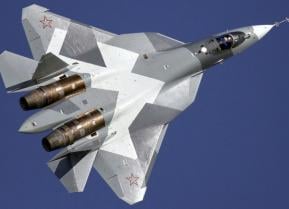Stealth Rules: One Expert Thinks the Air Force Should Avoid the F-15X
"Trying to adopt aircraft that belong in museums to warfare in the 21st century is a mistake."
The U.S. Air Force shouldn't waste money on new F-15s when what it really needs is to add stealth fighters, one leading air-power advocate argued.
F-15s are "unable to survive against the threats of biggest concern in our national-defense strategy." David Deptula, a former F-15 pilot who is now the dean of the Mitchell Institute for Aerospace Studies in Virginia, wrote in a Feb. 11, 2019 op-ed for Forbes.
The U.S. Air Force reportedly plans to request the first of around 200 new F-15Xs as part of the service's 2020 budget request. The Air Force last bought F-15s from Boeing in 2001.
The F-15X is an upgraded version of the iconic, twin-engine fighter that first flew in 1972. As of early 2019, the Air Force operated 457 F-15s, roughly evenly divided between C- and D-model air-superiority fighters and E-model fighter-bombers.
The F-15Cs and Ds date from the 1980s. The F-15Es mostly are of 1990s-vintage. The Cs and Ds mostly fly defensive patrols over the United States as part of the Air National Guard's air-sovereignty mission. Just two squadrons of F-15Cs in Japan train for high-intensity warfare over the Pacific Ocean.
Worldwide, 901 F-15s are in service. Purchases by Israel, Saudi Arabia, South Korea, Singapore and Qatar helped Boeing steadily to update the design with more powerful engines and sensors and a more capacious weapons load.
The latest F-15X will cost around $80 million per plane and comes in two variants, according to Tyler Rogoway, editor of The War Zone website.
"The F-15CX will be a single-seat configuration, while the F-15EX will be a two-seater with a fully missionized rear cockpit complete with a wide-area flat panel display, helmet-mounted display and full flight controls," Rogoway wrote. "The F-15EX will cost a couple million dollars more than its single-seat stablemate, but they will roll of the St. Louis production line right alongside one another.
The Pentagon's Office of Cost Assessment and Program Evaluation reportedly pushed the Air Force to buy F-15s after concluding that the service could not acquire new F-35 stealth fighters fast enough from Lockheed Martin totally to re-equip the force.
Air Force Chief of Staff Gen. David Goldfein told Defense News that buying non-stealthy F-15Xs would not impact the service's acquisition of stealthy F-35s. "They complement each other," Goldfein said. "They each make each other better."
Prior to selecting the F-15X, the Pentagon had no firm plan for replacing F-15Cs that are, on average, around 35 years old. "We’ve got to refresh the F-15C fleet because I can’t afford to not have that capacity to do the job and the missions," Goldfein said.
Deptula objected. "Investments made in the Air Force’s future force structure must focus on combat aircraft able to effectively meet the security challenges identified in the current national security and military strategies," he wrote.
"Specifically, China and Russia are radically advancing their military capabilities that threaten U.S. strategic preeminence. There are some in the Department of Defense who are advocating that the Air Force purchase new versions of legacy fighters as a means of achieving cost-efficiency—aircraft that were designed in the 1960s and first started rolling off production lines in the 1970s. Trying to adopt aircraft that belong in museums to warfare in the 21st century is a mistake."
An F-15 is faster, flies farther and carries more weapons than an F-35 does. Stealth is the major difference. But stealth doesn't necessarily help the old F-15C in its main mission patrolling U.S. air space.
Even Lockheed CEO Marillyn Hewson rejected Deptula's characterization. "If they choose to have an order of the F-15, it won’t be at the expense of F-35 quantities," Hewson said during a call with investors. "I'm hearing that directly from leadership in the Pentagon, and I think that's an important point for me to make."
But the debate over the F-15X belies a broader consensus that, whatever mix of fighters it buys, the Air Force is unlikely significantly to expand.
In September 2018, Air Force Secretary Heather Wilson announced a plan to grow the service from 312 front-line squadrons to 386. The plan echoed the U.S. Navy's own effort to grow from 287 ships to as many as 355.
The twin expansions likely would cost hundreds of billions of dollars. It's no surprise, then, that the Navy has begun backing away from the expansion plan.
Likewise, in February 2019 the Pentagon's CAPE concluded that the Air Force had enough tankers, sharply breaking from Wilson's insistence that the tanker fleet should grow by a third as part of the service's 386-squadron scheme.
If the Air Force buys F-15Xs over Deptula's objection, the upgraded jets likely will replace older F-15s on a one-for-one basis for a mostly domestic mission while the Air Force continues slowly to add F-35s for high-tech overseas warfare.
David Axe serves as Defense Editor of the National Interest. He is the author of the graphic novels War Fix, War Is Boring and Machete Squad.


